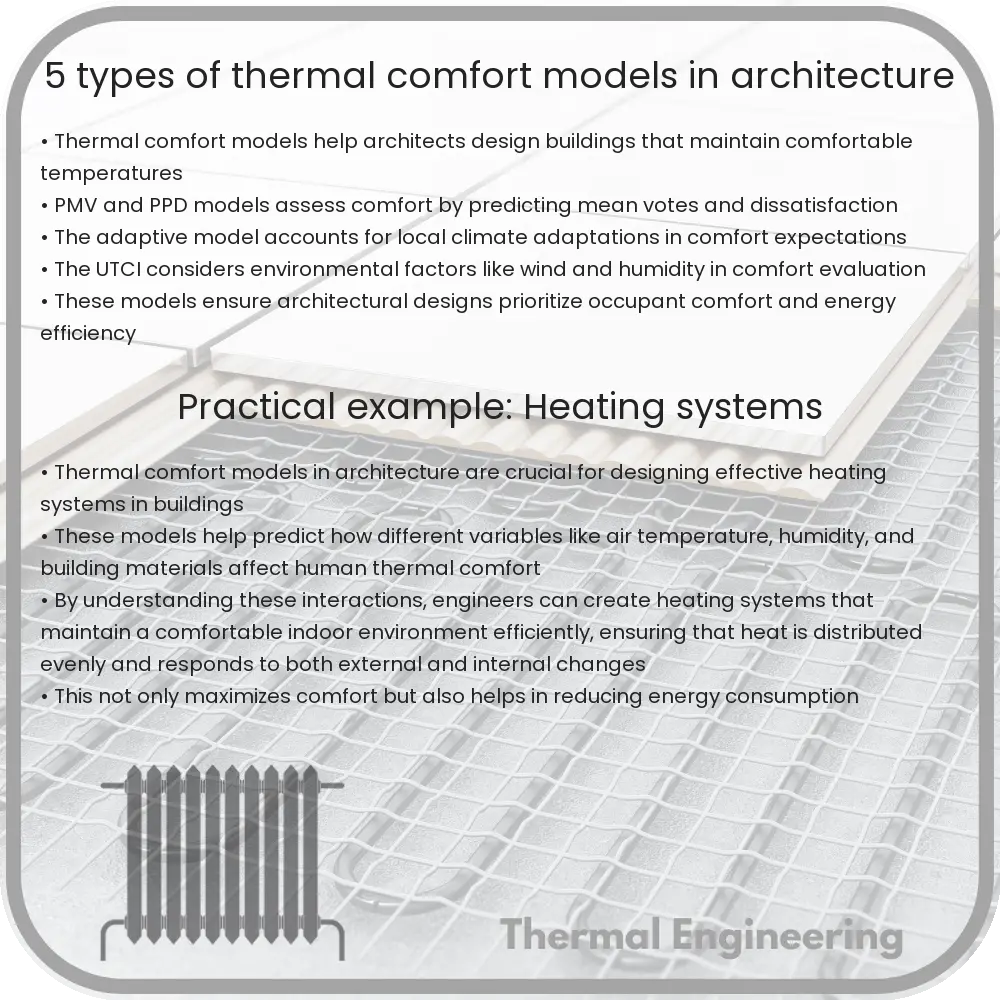Explore the application of different thermal comfort models in architecture, including Fanger’s Comfort Model and the Adaptive Comfort Model, to enhance occupant well-being.

Understanding Thermal Comfort Models in Architecture
Thermal comfort is a crucial aspect of architectural design, affecting both energy consumption and occupant satisfaction. Architects and engineers use various thermal comfort models to predict and evaluate the comfort levels within built environments. These models help in making informed decisions about HVAC system design, material selection, and other building attributes. Here’s an overview of five prominent types of thermal comfort models used in architecture.
1. Fanger’s Comfort Model
Developed by P.O. Fanger in the 1970s, this model is one of the most widely acknowledged approaches to assessing thermal comfort. It introduces the concept of Predicted Mean Vote (PMV), which predicts the mean value of the votes of a large group of people on a seven-point thermal sensation scale, ranging from -3 (cold) to +3 (hot). The Predicted Percentage of Dissatisfied (PPD) is also a component of this model, estimating the percentage of people likely to feel thermally uncomfortable. The formula for PMV is based on factors like air temperature, mean radiant temperature, air velocity, humidity, clothing insulation, and metabolic rate.
2. Adaptive Comfort Model
The Adaptive Comfort Model takes into account the adaptive behavior of people according to changes in their environment. It suggests that thermal comfort ranges can vary depending on the local climate and the occupants’ ability to adapt through natural ventilation, clothing, or other means. This model is particularly useful for designing spaces without mechanical cooling or heating systems, promoting sustainable practices.
3. ASHRAE Standard 55
A widely used standard in building design, ASHRAE Standard 55 outlines the conditions under which a substantial majority of occupants will find an environment thermally comfortable. This standard applies the principles from both the Fanger model and the adaptive model, offering guidelines that can be implemented in various climates and for different seasonal conditions.
4. Berkeley Comfort Model
Developed at the Center for the Built Environment at the University of California, Berkeley, this model focuses on local thermal comfort conditions. It assesses comfort by considering the impact of six primary factors: air temperature, radiant temperature, humidity, air speed, clothing level, and metabolic rate. This localized approach allows for more detailed thermal comfort analysis within different zones of a building.
5. UTCI – Universal Thermal Climate Index
The UTCI is a comprehensive thermal comfort model that considers the thermal environment from the perspective of human physiology. It evaluates how outdoor environmental conditions, including temperature, humidity, wind speed, and radiation, affect human comfort. The index is used globally and can apply to a wide range of climatic conditions, making it versatile for urban planning and outdoor comfort assessments.
In conclusion, understanding and applying these thermal comfort models enable architects and engineers to create more comfortable, functional, and sustainable living environments. Each model offers unique insights and tools to tailor architectural designs to the nuanced demands of climate and occupant comfort preferences, ultimately enhancing the overall well-being and satisfaction of building occupants.